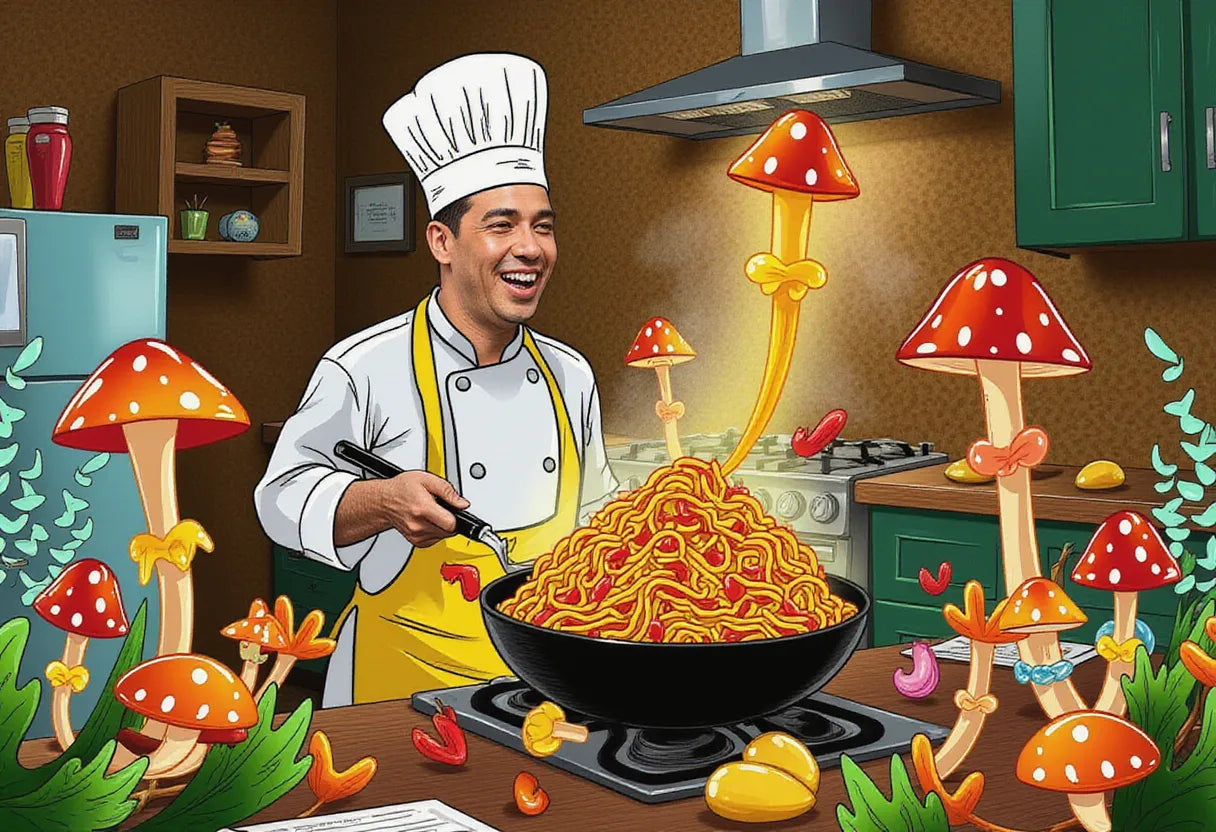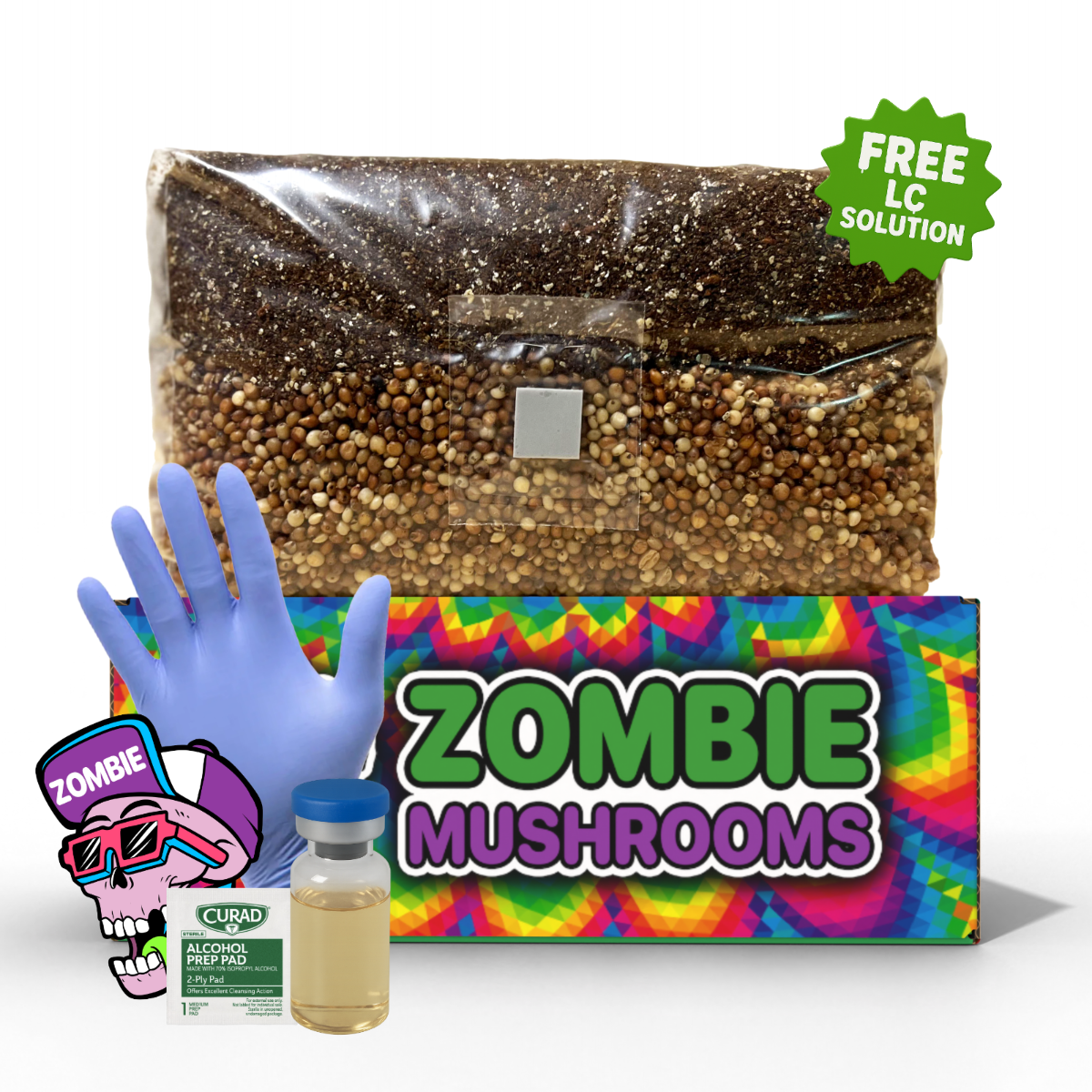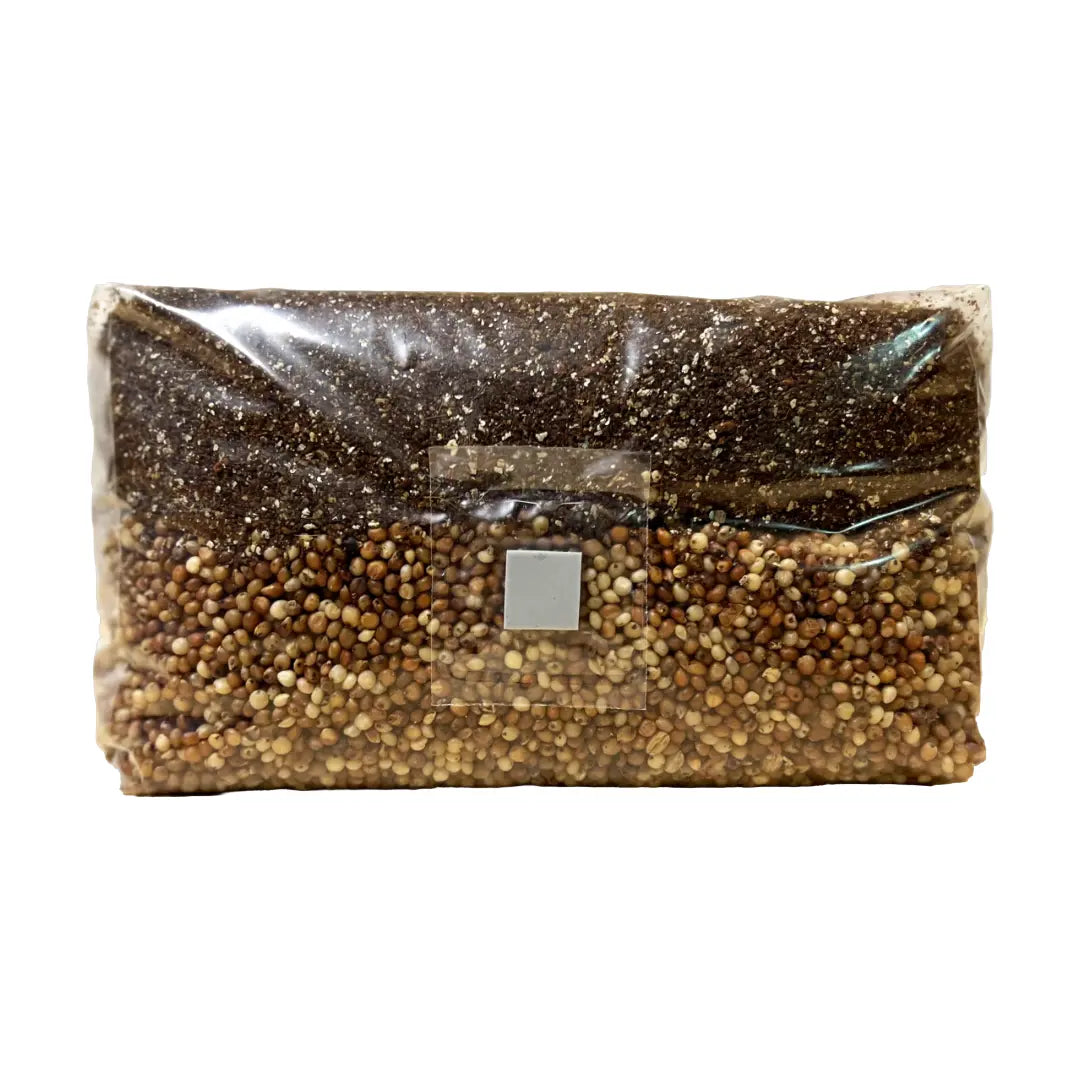⬇️ Prefer to listen instead? ⬇️

- Studies show lion’s mane mushrooms may help brain cells grow and support brain health.
- Hericenones and erinacines found in lion’s mane help support nerve growth.
- Lion’s mane lo mein feels like meat to eat, but has fewer calories and more nutrients.
- Lion’s mane is good for the planet and works for people who don't eat meat in stir-fry dishes.
- Putting too many lion’s mane pieces in a pan at once means they don't get browned right, and this changes the taste.
Plant-based eating is getting more popular. Lion's mane mushrooms are becoming a main ingredient. People like their meaty texture, good flavor, and benefits for the brain. Lion’s mane lo mein is one dish showing this. It mixes healthy mushrooms and noodles cooked in a hot pan. But is it more than a popular takeout choice? Let's see why this recipe is being made in many kitchens. And let's see why it might be a good dish for you to make regularly. If you want fresh Lion’s mane mushrooms at home, our grow bags make home cultivation simple and convenient, so you can enjoy them in your favorite recipes anytime.

What Is Lion’s Mane? A Gourmet Mushroom with Brain-Boosting Power
Lion’s mane mushrooms, Hericium erinaceus, are good for cooking and health. They look shaggy, like a lion's mane, with white, pom-pom shapes. People like how they look and how they taste, like lobster, with a solid, moist feel. In Asia, especially in China, Japan, and Korea, people have used them for a long time in soups, teas, and tonics for health. Now, cooks use them in plant-based dishes when they need something like meat. The taste is mild, a bit sweet, and earthy. It has a deep savory flavor, like shellfish. This taste makes them good for dishes like lo mein, which need strong flavors from cooking in a hot pan. And they are also good for your health, especially for your brain and nerves.

Why Lion's Mane Is the Perfect Meat Substitute for Lo Mein
Using something instead of meat in dishes like lo mein can sometimes make them not taste or feel very good. But lion’s mane mushrooms change this.
Texture Like No Other
When cooked, lion’s mane has a structure like shredded chicken or crab. It's good for soaking up sauces. Other things like tofu might feel plain or rubbery. But lion’s mane breaks into soft pieces that hold sauces well.
High Heat Resilience
Many vegetables get soft or lose shape when cooked fast over high heat. But lion’s mane stays firm. It gives you good pieces every time. This is good for lo mein, which is usually made in hot pans to quickly add flavors.
Umami-Rich Flavor Sponge
Lion’s mane takes on strong flavors like soy, hoisin, garlic, and ginger when cooked. It takes on bold sauces and seasonings easily. This makes it great for noodle dishes with Asian flavors.

The Nutritional Profile of Lion's Mane Mushrooms
Lion’s mane mushrooms don’t just taste good. They have a lot of nutrients, especially compared to meat.
Nutrients Per Serving (100g Cooked)
- Calories: ~35
- Protein: ~2–3g
- Fiber: ~2–4g
- Fat: <1g
- Potassium: ~400mg
- Beta-glucans: Compounds that help the body's defense system
- Antioxidants: Help fight stress in the body
Hericenones and erinacines are compounds that may help the brain. They are shown to make nerve growth factor (NGF) in the brain [Spelman et al., 2017]. This NGF may help nerve cells grow and slow down how the brain changes with age.
Brain Food Credentials
- Helps memory: Studied in older adults for memory support.
- Helps nerve growth: Makes brain and nerve cells grow.
- May help mood: Some signs show it helps lower signs of worry and sadness.

Health Benefits That Back the Buzz
Lion’s mane is not just a meat choice. It has many health benefits that have been written about.
Scientifically Backed Advantages
-
Brain Function
Lion’s mane helps brain function. Hericenones and erinacines help the brain change. This is needed for learning and remembering. -
Mood and Mental Health
A study from 2009 showed that adults who took lion’s mane for just four weeks felt less sad and worried than a group who took a fake pill [Nagano et al., 2009]. -
Helps with Swelling
Long-term low inflammation is linked to many illnesses. Lion’s mane has compounds shown to lower signs of inflammation. -
Helps the Body's Defense
Compounds in mushrooms help the body's defense system work. This helps fight off sickness. -
Helps the Stomach and Gut
Studies suggest lion's mane can help good gut bacteria. It may also lower the chance of ulcers.
Most studies so far are early or in animals. But they show good possibilities for this mushroom's health effects.

Lion’s Mane Lo Mein: Flavor Breakdown
Now let’s talk about the taste. Lion’s mane lo mein tastes great. It also offers health benefits. Think of tender, cooked strips of lion's mane with crispy edges. They are mixed in salty, slightly sweet sauces with garlic, sesame oil, and strong soy flavor. With green onions, ginger, and cooked vegetables, the dish has many layers of savory taste and texture. It can be as good as any regular takeout dish. Lion’s mane mushrooms make the savory flavor stronger. When mixed with aged and good-smelling ingredients, the taste is much better than you might think for a vegan dish.

Step-by-Step Cooking Tips for Lion’s Mane Lo Mein
Want to make your own lion's mane lo mein? Follow these tips for a good dish every time.
Clean & Tear, Don’t Rinse
Use a damp cloth or soft brush to clean off dirt. Don't rinse them. Rinsing can make them soft and mushy. Tear them into long pieces for a shredded "meat" feel.
Cook Dry First
Put the mushrooms in a hot pan with no oil first. Let them release their water. Once dry and a bit browned, add oil and seasonings. Doing this gets the most flavor and best texture.
Choose the Noodle
Lo mein noodles (egg or wheat) are best. If you can't find them, use ramen or udon. They will have a similar chewy feel.
Add Vegetables
Use fast-cooking vegetables with the lion’s mane, like
- Sliced bell peppers
- Shredded carrots
- Snow peas
- Green onions
- Shiitake or oyster mushrooms for more savory taste
Make the Sauce
A classic lo mein sauce uses
- 2 tbsp soy sauce
- 1 tbsp sesame oil
- 1 tsp rice vinegar
- 1 tsp brown sugar or maple syrup
- 1 minced garlic clove
- Optional: chili flakes, hoisin, or sriracha
Mix it before you start cooking. Add it at the end, during the last 1-2 minutes of cooking the dish fast over high heat.
Where to Get Lion’s Mane Mushrooms (Hint: Grow Them Yourself!)
You can sometimes find lion’s mane mushrooms in some grocery stores or farmers markets. But you can't always find them everywhere. The good news? They are very easy to grow yourself at home using kits.
Grow Your Own
Companies like Zombie Mushrooms sell kits that are easy for beginners. You can grow lion’s mane on your kitchen shelf or in your basement. Most use bags with spores already in them. You only need
- A place with moisture (or a spray bottle)
- Not direct sun
- To wait a few weeks
Growing your own means they are very fresh. It also saves money. And it teaches you about how these mushrooms grow.

Sustainability & Wellness: Why Lion’s Mane Wins
Growing mushrooms uses much less from the planet than raising animals for food. Think about these good points for the Earth
- Uses much less water and land than raising animals.
- Creates less pollution in the air.
- Mushrooms can grow on waste like sawdust or coffee grounds.
- You can pick them in just 3–4 weeks.
Lion's mane mushrooms have good nutrients, not much fat, and work for diets without meat or animal products. This makes them a good choice for sustainable, healthy food. They are not like fake meats that are made with many steps. Lion’s mane is a real, whole food.

Variations on the Recipe: Customize Your Mushroom Stir-Fry
You can change the lion’s mane lo mein recipe in many ways. Once you know how to make the basic dish, you can add different tastes or other protein.
- Spicy Lo Mein: Add garlic chili oil, small hot peppers from Thailand, or Korean gochujang paste.
- Creamy Lo Mein: Mix peanut butter or tahini into your sauce to make it rich.
- Island Vibes: Use pieces of pineapple and soy glaze for a mix of sweet and savory.
- Miso Fusion: Add white or red miso paste for a strong, savory taste.
- Extra Protein: Mix in cubes of tofu, tempeh, or a soft-cooked egg (if you eat eggs).
Add sesame seeds, cut cilantro, or crushed peanuts on top for more feel and look.

Beyond Lo Mein: More Ways to Cook with Lion’s Mane
Like lion’s mane mushrooms a lot? Here are more good ways to use them in your cooking.
- “Crab” Cakes: Mix torn lion’s mane with breadcrumbs, vegan mayo, Old Bay, and paprika. Cook in a pan until brown.
- BBQ Sandwiches: Cook in barbecue sauce. Put on buns with slaw.
- Creamy Dishes: Mix with rosemary and pesto or creamy garlic sauces for rice dishes or pasta.
- Asian Soups: Put in miso soup, hot pots, or Thai coconut soup.
- Lion’s Mane Jerky: Dry seasoned mushrooms for a chewy snack with protein.
These dishes help you use all your mushrooms.

Common Cooking Mistakes to Avoid with Lion's Mane
Cooking lion's mane is not hard. But avoid a few things to get the best results.
-
Overcrowding the Pan
Putting too many in the pan at once makes them steam instead of brown. Cook them in smaller amounts if needed. -
Skipping the Dry Sear
Water needs to come out before adding oil. If not, the mushrooms will be wet and soft. -
Not Enough Seasoning
Lion’s mane takes on strong flavors. Use plenty of garlic, soy, or spices. -
Cooking Too Long After Sauce Is Added
Sauces can burn fast. Add them at the end. Mix well, then serve.
The good thing is, once you do it right, you will want to cook lion’s mane often.

Can You Eat Too Many Mushrooms? (Let’s Talk Balance)
Lion’s mane mushrooms are healthy. But eating too much of anything is not always good. Eating different foods keeps your diet balanced. It also helps the good tiny life in your gut.
Things to Keep in Mind
- Watch for Allergies: It doesn't happen often, but some people might react to mushroom proteins.
- If Taking Supplements: Talk to your doctor. This is extra important if you take medicine.
- Don’t Only Eat This for Protein: Eat beans, grains, and seeds too. This gives you all the nutrients you need.
Mushrooms should be some of what you eat, not all of it.
The Verdict: Is Lion’s Mane Lo Mein Worth the Hype?
Is Lion’s Mane Lo Mein Worth It? Yes.
Lion’s mane lo mein is more than just a short-term popular food. It’s a healthy, tasty dish you can change many ways. It fits today's want for interesting cooking and healthy food.
If you are looking into mushrooms for health, taste, or for the Earth, lion’s mane mushrooms are easy to use. They are a food that helps your body, a food that makes you feel good, and a special meal, all in one. This is extra true when you make it into lo mein.
So, get your noodles ready, cook your mushrooms, and mix your sauces. With just some things and a hot pan, you will see how good lion’s mane lo mein is.
References
- Spelman, C., Burns, J., Nichols, D., & Simmonds, M. S. (2017). Hericenones and erinacines: Compounds with neurotrophic properties from Lion’s Mane mushroom (Hericium erinaceus). International Journal of Medicinal Mushrooms, 19(5), 459–465.
- Nagano, M., Shimizu, K., Kondo, R., & Hayashi, C. (2009). Reduction of depression and anxiety by 4 weeks Hericium erinaceus intake. Biomedical Research, 30(4), 231–237.



